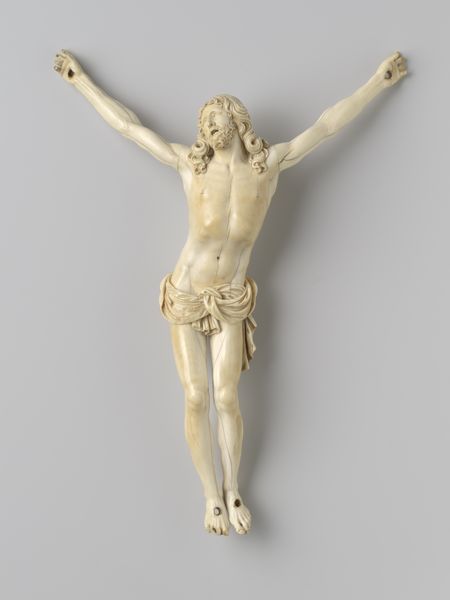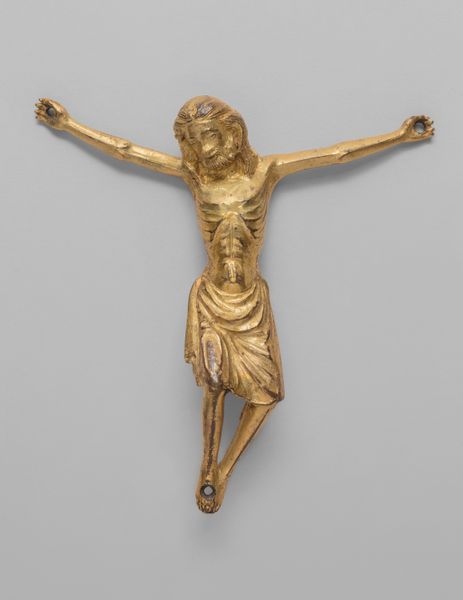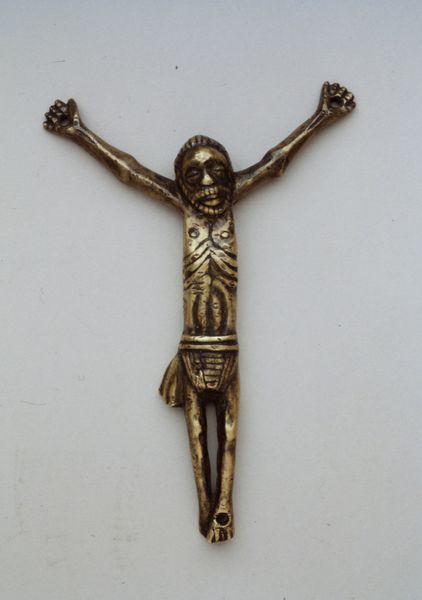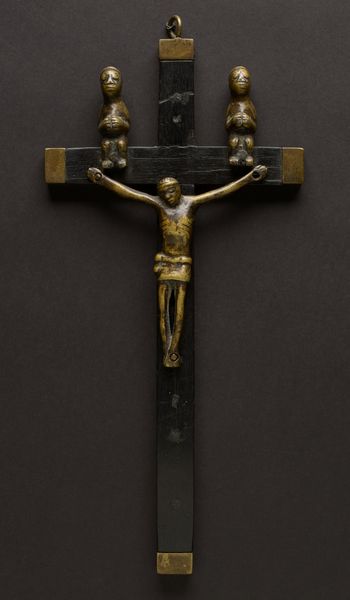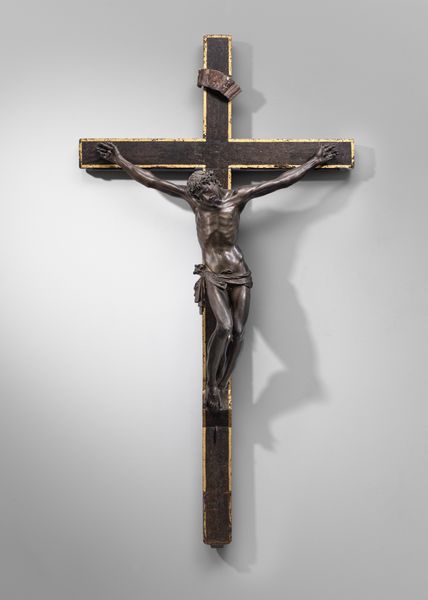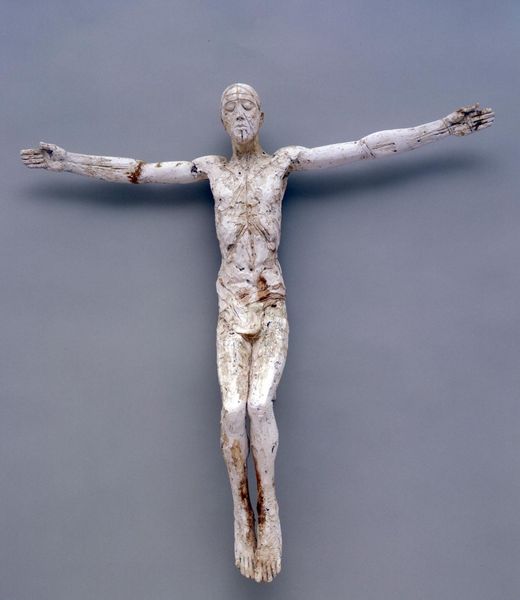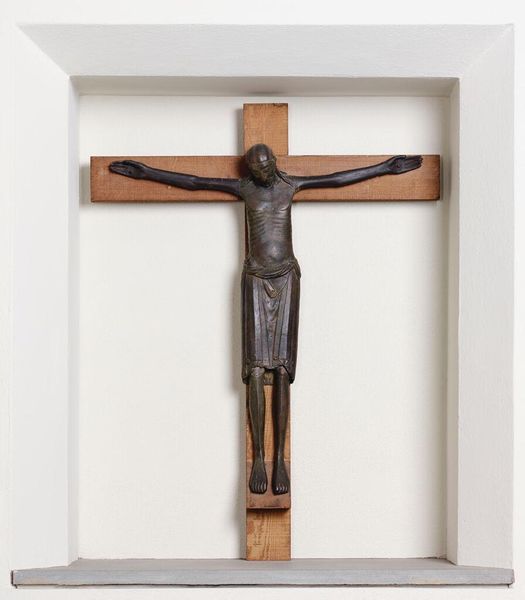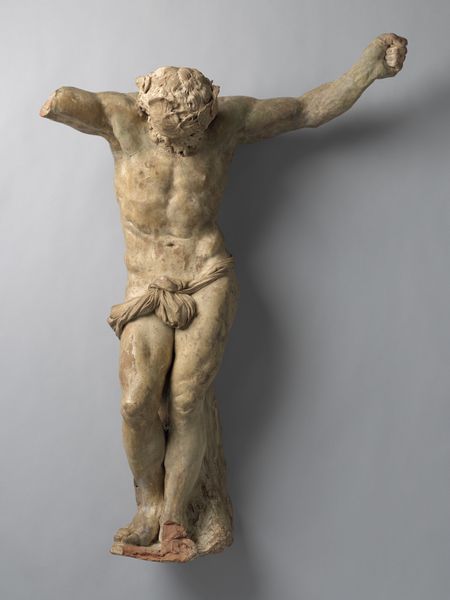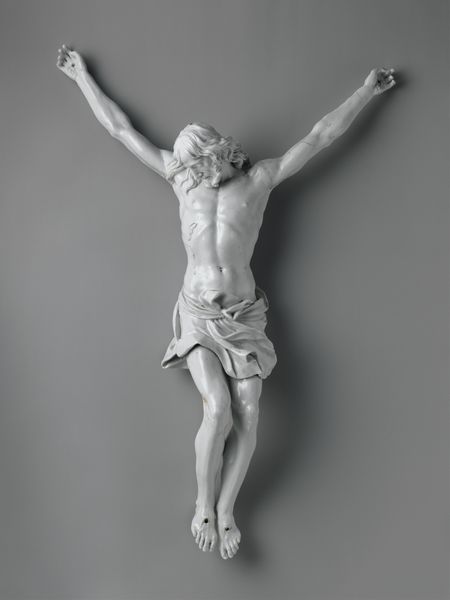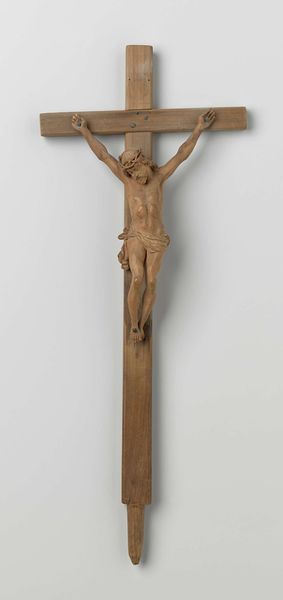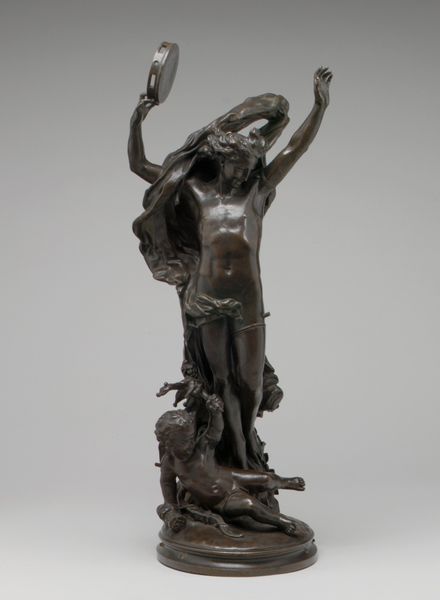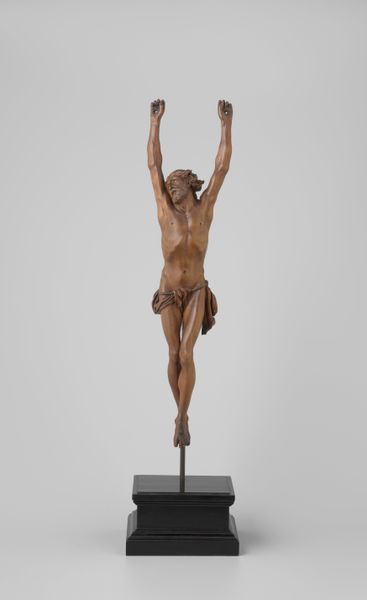
bronze, sculpture
#
sculpture
#
bronze
#
figuration
#
11_renaissance
#
sculpture
#
men
#
crucifixion
#
decorative-art
#
italian-renaissance
Dimensions: (Christ .a, confirmed): 10 3/4 × 8 × 1 13/16 in. (27.3 × 20.3 × 4.6 cm); (Thief .b, confirmed): 9 3/8 × 7 1/4 × 2 3/8 in. (23.8 × 18.4 × 6 cm); (Thief .c, confirmed): 9 1/8 × 8 3/4 × 2 7/8 in. (23.2 × 22.2 × 7.3 cm); (Base and crosses): 31 3/8 x 17 1/2 in. (79.8 x 44.5 cm)
Copyright: Public Domain
Michelangelo crafted these bronze figures of Christ and the two thieves most likely in the early 16th century. The lost-wax casting technique, a process demanding both technical skill and artistic vision, was employed to create these three-dimensional forms. Look closely, and you’ll see how the bronze material influences the figures’ appearance, its inherent qualities of weight, texture, and color all contributing to the work's overall impact. The artist manipulated the wax to create intricate details, from the musculature of the figures to the textures of their hair. Bronze casting was an established tradition, demanding both physical labor and specialized knowledge, with the amount of work involved in production adding to the artistic value of the sculpture. By emphasizing the material and making of this artwork, we can see how the artist was working within a well-established tradition while also pushing the boundaries of what was possible with this medium. It encourages us to think about how materials, making, and context all contribute to the meaning of an artwork.
Comments
No comments
Be the first to comment and join the conversation on the ultimate creative platform.

